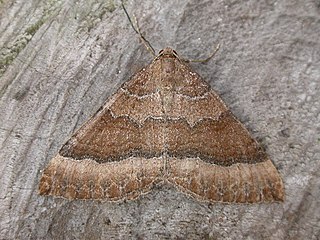
Aponotoreas is a genus of moths in the family Geometridae erected by Robin C. Craw in 1986.
Aspitates is a genus of moths in the family Geometridae.
Capasa is a genus of moths in the family Geometridae.
Chlororithra is a genus of moths in the family Geometridae erected by Arthur Gardiner Butler in 1889.
Dalima is a genus of moths in the family Geometridae described by Moore in 1868.
Deinotrichia is a monotypic moth genus in the family Geometridae described by Warren in 1893. Its only species, Deinotrichia scotosiaria, was described by the same author in the same year. The species was described from Sikkim, India.

Garaeus is a genus of moths in the family Geometridae described by Moore in 1868.

Herochroma is a genus of moths in the family Geometridae. The genus was described by Charles Swinhoe in 1893.

Heterophleps is a genus of moth in the family Geometridae.
Mallomus is a genus of moths in the family Geometridae.

Phrudocentra is a genus of moths in the family Geometridae. The genus was described by Warren in 1895.
Phyllia is a monotypic moth genus in the family Geometridae. It is considered by Luis E. Parra and Carla A. Alvear to be a synonym of Ennada. As a genus, its only species is Phyllia triangularia, which is found in Chile. Both the genus and species were described by Blanchard in 1852.
Plegapteryx is a genus of moths in the family Geometridae erected by Gottlieb August Wilhelm Herrich-Schäffer in 1856.
Proteopharmacis is a genus of moths in the family Geometridae.
Syngonorthus is a monotypic moth genus in the family Geometridae. Its only species, Syngonorthus subpunctatus, is found in Borneo and Sumatra. Both the genus and species were described by Arthur Gardiner Butler in 1892.

Sterrhinae is a large subfamily of geometer moths with some 2,800 described species.
Anonychia is a genus of moths in the family Geometridae described by William Warren in 1893 with type species Anonychia grisea. The genus was described using Nadagara grisea described by Arthur Gardiner Butler and genus Onychia described by Jacob Hübner and two more species added by Frederic Moore i.e. Anonychia lativitta and Anonychia violacea along with his Anonychia rostrifera. The name Anonychia is slightly altered from original Onychia by Hübner and Moore.

Asthenini is a tribe of geometer moths under subfamily Larentiinae first described by Warren in 1893. The tribe has been combined with Eupitheciini in the past, most notably by Jeremy Daniel Holloway in his work The Moths of Borneo.

Larentiini is a tribe of geometer moths under subfamily Larentiinae. The tribe was first described by Philogène Auguste Joseph Duponchel in 1845.









